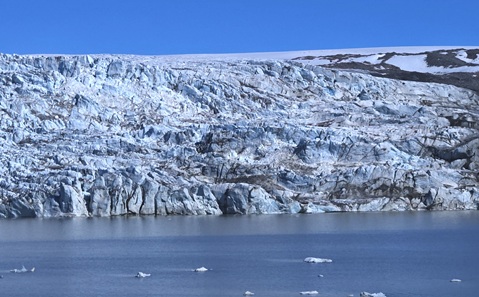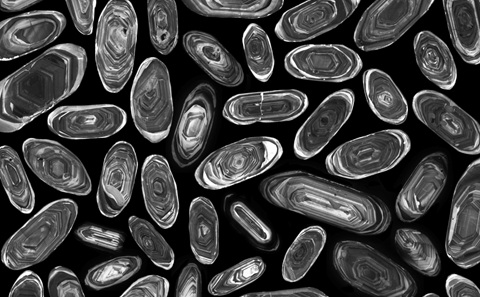Ancient rocks reveal how ice age weakened the Roman Empire

Scientists at the University of Southampton have uncovered new evidence revealing the scale and intensity of the Late Antique Little Ice Age – a 6th century climate crisis that coincided with the collapse of the Roman Empire.
Working with colleagues from Queen’s University Canada and the Chinese Academy of Sciences in Beijing, the team studied unusual rocks found within a raised beach terrace on Iceland’s west coast.
They discovered that the rocks were carried there by icebergs during a brief ice age that started at around 540 AD and lasted for 200-300 years.
Historians have long debated the role of climatic cooling in the fall of the Roman Empire. This new research strengthens the case that a brief but intense period of cooling may have kicked an already declining empire and played a key role in inciting the mass migrations that reshaped Europe in this period.
“When it comes to the fall of the Roman Empire, this climate shift may have been the straw that broke the camel’s back,” said Tom Gernon , Professor of Earth Science at the University of Southampton, and co-author of the new research.
The ice age is thought to have been triggered by volcanic ash from three massive eruptions, which blocked out sunlight and lowered global temperatures.

The scientists’ findings, published in the journal Geology , provide new insights into a climate disruption that affected the wider North Atlantic region.
“We knew these rocks seemed somewhat out of place because the rock types are unlike anything found in Iceland today, but we didn’t know where they came from,” said Dr Christopher Spencer, Associate Professor at Queen’s University in Kingston, Ontario, and lead author of the research.
Study co-author Professor Ross Mitchell, from the Institute of Geology and Geophysics, Chinese Academy of Sciences (IGGCAS), said: “On one hand, you’re surprised to see anything but basalt in Iceland; but having seen them for the first time, you instantly suspect they arrived by iceberg from Greenland.”
By analysing the age and composition of tiny mineral crystals called zircon locked inside the rocks, the team were able to pinpoint their source. To do this, the scientists crushed the rocks into fragments and separated out hundreds of zircon crystals, many of which are smaller than the tip of a pen.
“Zircons are essentially time capsules that preserve vital information including when they crystallised as well as their compositional characteristics”, said Dr Spencer. “The combination of age and chemical composition allows us to fingerprint currently exposed regions of the Earth’s surface, much like is done in forensics.”
The team discovered that the range of formation ages of the rock fragments spanned nearly three billion years, which is two thirds of Earth history.
The scientists were able to fingerprint the rocky debris to specific regions of Greenland, a mosaic of fragments of ancient Earth’s crust around 0.5, 1 to 1.5, and 2.5 to 3 billion years old.

“This is the first direct evidence of icebergs carrying large Greenlandic cobbles to Iceland,” said Dr Spencer. Cobbles are rounded rocks about the size of a human fist.
“The fact that the rocks come from nearly all geological regions of Greenland provides evidence of their glacial origins,” added Professor Gernon. “As glaciers move, they erode the landscape, breaking up rocks from different areas and carrying them along, creating a chaotic and diverse mixture – some of which ends up stuck inside the ice."
The team determined that these ice-rafted rocks were likely deposited during the 7th century, coinciding with a major climate shift known as the Bond 1 event. The beach terraces rose as the land slowly rebounded after the last ice sheets melted.
Professor Gernon said: “This timing coincides with a known major episode of ice-rafting, where vast chunks of ice break away from glaciers, drift across the ocean, and eventually melt, scattering debris along distant shores.”
Dr Spencer added: “What we’re seeing is a powerful example of how interconnected the climate system is. When glaciers grow, icebergs calve, ocean currents shift, and landscapes change. Climate-driven iceberg activity may have been one of the many cascading effects of rapid cooling.”